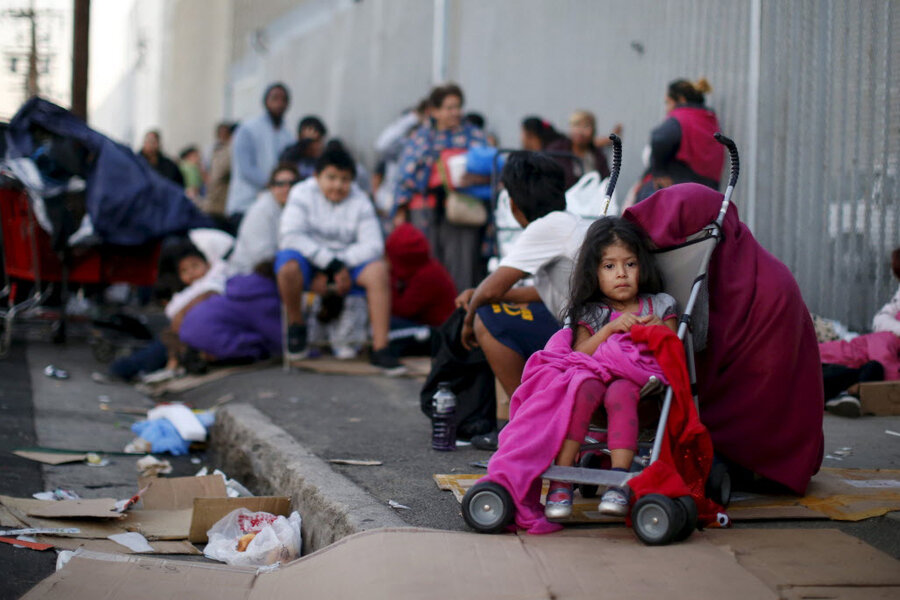Homelessness ticks downward across US, despite local crises
Loading...
The number of people experiencing homelessness in the United States dipped slightly this year, according to federal data released Thursday.
A Housing and Urban Development (HUD) study found 565,000 people – roughly a quarter of them children – were homeless in the US during a point-in-time survey conducted in January. The number reflects a two percent decrease from 2014, and an 11 percent drop since 2007.
While the downward trend, however slight, is promising, advocates are cautious to celebrate declines just yet.
"I am glad it's trending downward, but a 2 percent change (nationally) is pretty much flat," Nan Roman, president of the National Alliance to End Homelessness told Reuters.
Point-in-time counts offer valuable insight into the number of individuals sleeping in shelters and on the streets, but advocates say the actual number of homeless is likely higher. Many people experiencing homelessness fall into a gray area where they are inaccessible to surveyors because they may be sleeping at a friends house or with relatives.
Despite the national trend line, many US cities are seeing an increase in homelessness.
The recession that began in 2007 caused homelessness to spike and many cities are still recovering as wages are falling or stagnant and budgets are cut for social programs. The large homeless populations have prompted states of emergencies in Los Angeles, Seattle, Portland, Oregon, and Hawaii.
“Despite national estimates, New York City continues to experience near record homelessness,” a spokeswoman for the Coalition for the Homeless told Reuters. Mayor Bill de Blasio just announced $2.6 billion in new funding for supportive housing to address the problem.
In Los Angeles, the emergency shelter system has become so overwhelmed the city on Wednesday announced it will open city buildings to people seeking a warm place to stay during upcoming winter nights and designate parking lots where people can sleep in their cars.
The fact that the national figures declined at all amid severe spikes in several major US cities suggests that efforts to reduce homelessness are having some level of impact.
Thirty-three states and the District of Columbia recorded declines in homelessness.
Significant progress has been made to reduce homeless veterans. The January count found 47,000 homeless veterans – a 4 percent drop from 2014. That number has likely dropped further since January as communities and the federal government have invested in housing veterans. HUD and the Department of Veterans Affairs announced an additional $12 million investment in a program to provide rental subsidies for veterans.
Many cities are also developing their own strategies to address the homelessness situation, especially for veterans. New Orleans, Houston, and Las Vegas are just a few of the more than a dozen cities developing programs.
This report includes material from the Associated Press and Reuters.








